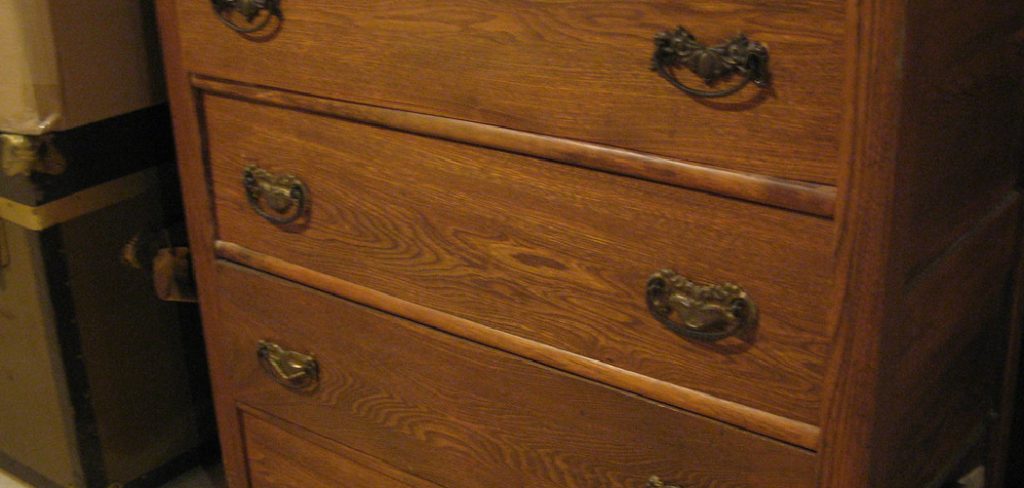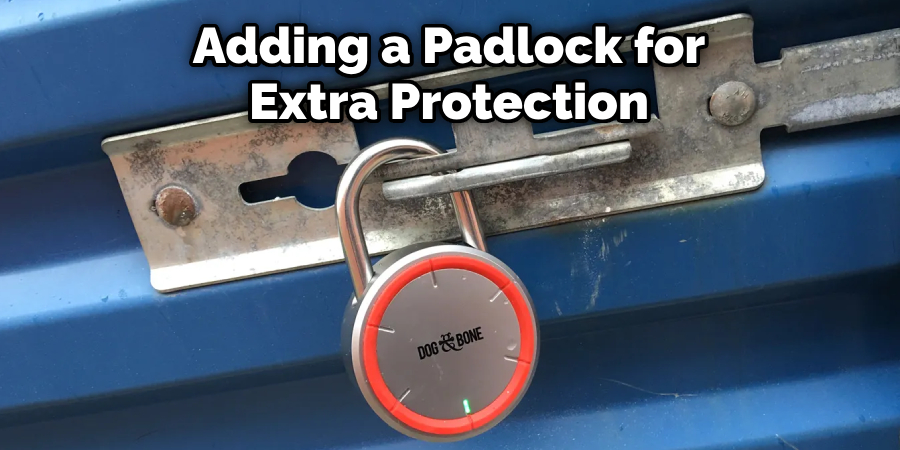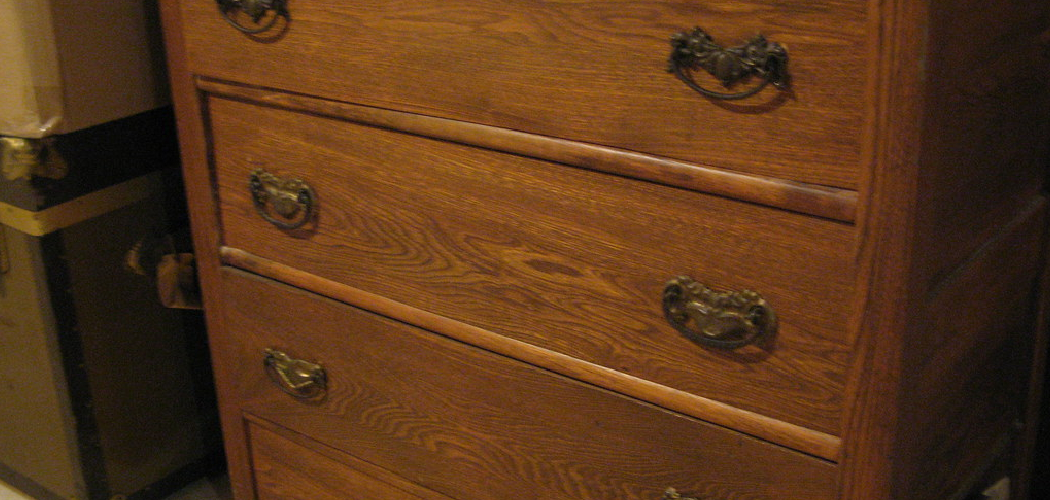Are you in the process of organizing your home or just looking to add an extra level of security to your belongings? Locking dresser drawers is a great way to give yourself peace of mind and make sure that any confidential information, expensive items, and valuables are stored away securely. Whether it’s for safety reasons, protecting sentimental items, or keeping prying hands out – this guide will provide helpful insight on how to lock dresser drawers effectively!

5 Reasons Why You Need to Lock Dresser Drawers
1. To Protect Valuables
Whether it’s jewelry, money, or other items of value, locking dresser drawers is a great way to ensure that your valuable items are kept safe.
2. To Keep Confidential Information Private
Do you have documents or paperwork that contain personal information? Locking dresser drawers can help keep these documents out of the wrong hands.
3. To Prevent Kids from Getting into Dangerous Items
If you have items such as cleaning products or medications, it’s important to keep them away from children. Locking dresser drawers can help prevent curious kids from getting into potentially dangerous materials.
4. To Improve Home Security
Installing locks on your dresser drawers is an easy way to add an extra layer of security to your home.
5. To Keep Sentimental Items Safe
Do you have items that are irreplaceable or hold sentimental value? Locking dresser drawers can ensure that these items remain safe and secure.
8 Easy Step-By-Step Guides on How to Lock Dresser Drawers
1. Choose the Lock
The first step in how to lock dresser drawers is choosing the right type of lock. You can choose from a variety of different locks, including combination locks, padlocks, and keyed locks. Consider the level of security you need and what type of materials your dresser drawer is made out of when selecting a lock.
2. Measure and Mark
Once you’ve chosen the type of lock you want to use, measure the area where you plan to install it and mark the spot with a pencil or marker.
3. Drill Holes
Use a drill to create two holes in your dresser drawer at the marked spots. Be sure to use a drill bit that is appropriate for the material your dresser drawer is made out of.
4. Attach Lock
Put the lock onto the dresser drawer and secure it with screws or other fasteners. Make sure that the locking mechanism is aligned properly so that it opens and closes easily.
5. Check the Lock
Test the lock to make sure that it’s working properly and can be opened and closed easily.
6. Install Lid Stay
If you want to ensure that the dresser drawer stays closed, install a lid stay or other similar device on the opposite side of the drawer.
7. Add a Padlock
Depending on your desired level of security, you may want to add an additional padlock or other locking device for extra protection.
8. Secure the Drawer
Finally, double-check that all locks are secure and cannot be easily opened or removed by unwanted visitors.

Now that you know how to lock a dresser drawer, your belongings can stay safe and secure! With a few simple steps, you can add an extra layer of protection to any type of dresser drawer. So don’t hesitate – start locking those drawers today!
How to Add Smart Lock in Your Dresser Drawers
Adding a smart lock to your dresser drawers can provide an extra layer of security and convenience. Here’s a general guide on how to add a smart lock to your dresser drawers:
1. Choose a Smart Lock
Select a smart lock that is suitable for your dresser drawers. Look for one that is small in size and can be easily installed on the drawer without obstructing its functionality. Various smart lock options are available on the market, so consider factors such as compatibility with your smart home system, features, and reviews before purchasing.
2. Prepare the Drawer
Clear out the drawer’s contents and remove any obstructions or dividers that might interfere with the installation of the smart lock.
3. Mount the Smart Lock
Follow the manufacturer’s instructions to mount the smart lock on the inside of the drawer. Most smart locks come with adhesive backings or mounting brackets. Ensure that the lock is securely attached and aligned properly.
4. Connect to Power
Depending on the smart lock you’ve chosen, it may require a power source. Some locks use batteries, while others may need to be connected to an electrical outlet. Follow the instructions provided with your smart lock to connect it to the power source.
5. Set Up and Pair
Install the associated mobile app for the smart lock on your smartphone or tablet. Follow the app’s instructions to pair the smart lock with your device. This step usually involves connecting to the lock’s Wi-Fi network or using Bluetooth.
6. Configure Settings
Once paired, you can configure the settings of the smart lock through the mobile app. This may include setting up access codes, granting temporary or permanent access to specific users, adjusting security features, and customizing notifications.
7. Test the Lock
After setup, test the smart lock to ensure it’s working correctly. Open and close the drawer using the app or the provided access codes to ensure smooth operation and proper locking.
It’s important to note that the specific steps may vary depending on the smart lock you choose. Always refer to the manufacturer’s instructions and follow their guidelines for installation, setup, and operation.
How to Hide Locks in Your Dresser Drawers
If you want to hide locks in your dresser drawers to maintain a seamless appearance, here are a few suggestions:
1. Magnetic Locks
Consider using magnetic locks that are installed inside the drawer and remain hidden from view. Magnetic locks use magnets to keep the drawer closed and can be accessed with a magnetic key. This type of lock eliminates the need for visible external hardware.
2. Recessed Locks
Install recessed locks that are embedded within the drawer’s surface. These locks are designed to be flush with the drawer front, making them discreet and less noticeable. Recessed locks can be operated using a key or a combination.
3. Hidden Panels or False Bottoms
Create hidden panels or false bottoms within the drawer that conceal the locks. This approach requires some DIY skills but can effectively keep the locks out of sight. You can use wood, fabric, or plastic to create the hidden compartments.
4. Camouflage with Decorative Hardware
Use decorative hardware, such as decorative knobs, handles, or drawer pulls, to camouflage the locks. Choose hardware that matches the style and design of your dresser. This way, the locks blend in with the overall aesthetics of the furniture.
5. Conceal with Drawer Liners or Fabric
Line the inside of the drawer with decorative drawer liners or fabric to hide the locks from view. This method adds a layer of elegance and can help disguise any visible locking mechanisms.
6. Disguise with Faux Hardware
Attach faux hardware, such as decorative plates or decorative hinges, to the outside of the drawer. These elements divert attention from the actual locking mechanism and give the impression of ornamental hardware rather than functional locks.
7. Customized Concealment
Depending on your woodworking skills, you can customize the design of your dresser to incorporate hidden compartments or secret drawers. These concealed spaces can house the locks and provide an extra layer of security without compromising the dresser’s appearance.
Remember that while hiding the locks can enhance the aesthetic appeal of your dresser, it’s essential to ensure that the locking mechanisms remain functional and secure. Always test the locks regularly and ensure they are properly maintained for optimal performance.
How to Avoid Common Mistakes While Locking Dresser Drawers
When locking dresser drawers, it’s essential to avoid common mistakes to ensure the security of your belongings. Here are some tips to help you avoid these mistakes:
1. Proper Installation
Ensure that any locks or locking mechanisms you install on your dresser drawers are properly installed according to the manufacturer’s instructions. Improper installation can lead to ineffective locking or even damage to the drawers.
2. Secure Mounting
When using adhesive locks or brackets, make sure they are securely attached to the drawer. Test the lock’s stability and ensure it can withstand pressure or attempts to force the drawer open.
3. Adequate Lock Strength
Choose a lock that provides sufficient strength and security for your needs. Consider the materials and construction of both the lock and the dresser drawers. Weak or flimsy locks may be easily compromised.
4. Avoid Easy-to-Guess Combinations
If you’re using combination locks, avoid using easily guessable combinations such as birthdays or sequential numbers. Choose unique and complex combinations that are not easily associated with you or readily guessed by others.
5. Keep Keys and Codes Secure
If you’re using locks requiring keys or access codes, keep them in a secure location. Avoid leaving keys or codes in obvious places that could be easily discovered, such as nearby drawers or under the dresser itself.
6. Regularly Check and Maintain
Periodically inspect your locks and dresser drawers to ensure they are in good working condition. Check for any signs of damage, wear, or tampering. Replace or repair any faulty locks promptly.
7. Consider Redundancy
Depending on the level of security required, you may want to consider adding multiple layers of security, such as using both a keyed lock and a combination lock. This can provide added protection in case one method fails or is compromised.
8. Balance Accessibility and Security
Find a balance between security and convenience. Make sure the locking mechanism you choose allows you to access your belongings easily when needed without hindering your daily routine or causing frustration.
By being mindful of these common mistakes, you can ensure that your dresser drawers are securely locked and your belongings are protected.
Conclusion
Locking dresser drawers is a simple and effective way to protect your belongings from theft or damage. With the right tools, it’s easy to install locks on any type of drawer, regardless of its size or material. If you want something more secure, consider adding an electronic lock that requires a code for entry.
You can also add security by locking bars over multiple drawers at once so they cannot be opened without first unlocking them all. Whatever method you choose, take the time to ensure that your dresser drawers are properly locked before leaving home or going to bed each night. Thanks for reading this article about how to lock dresser drawers.

